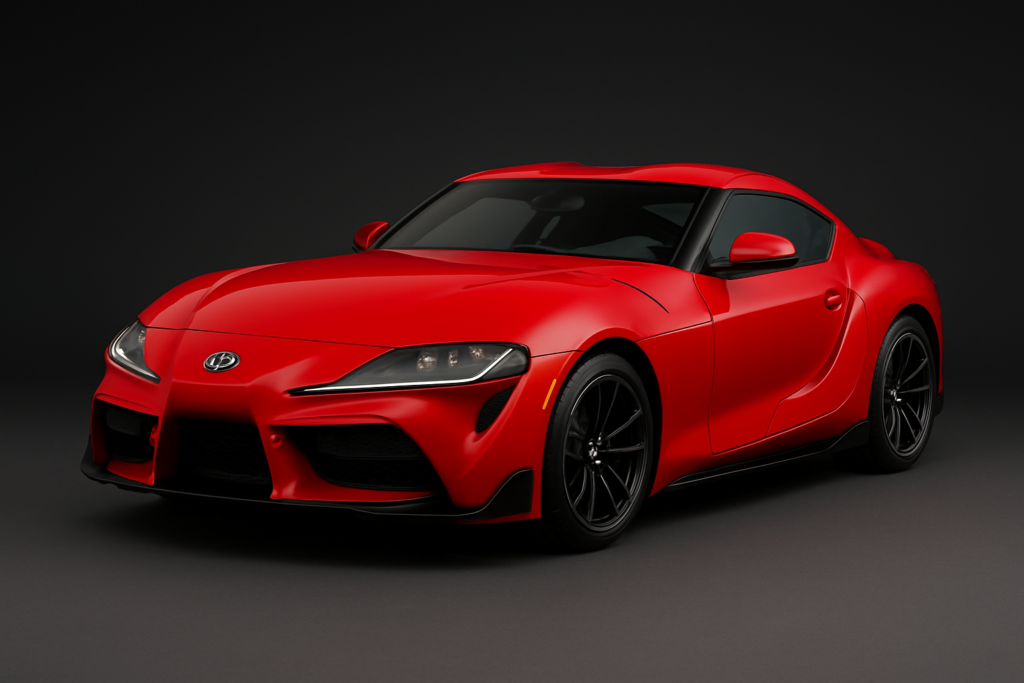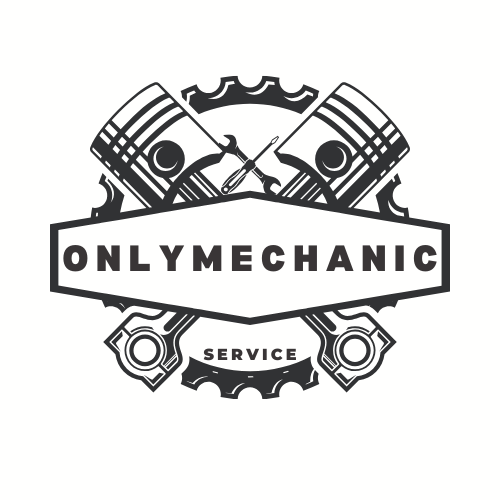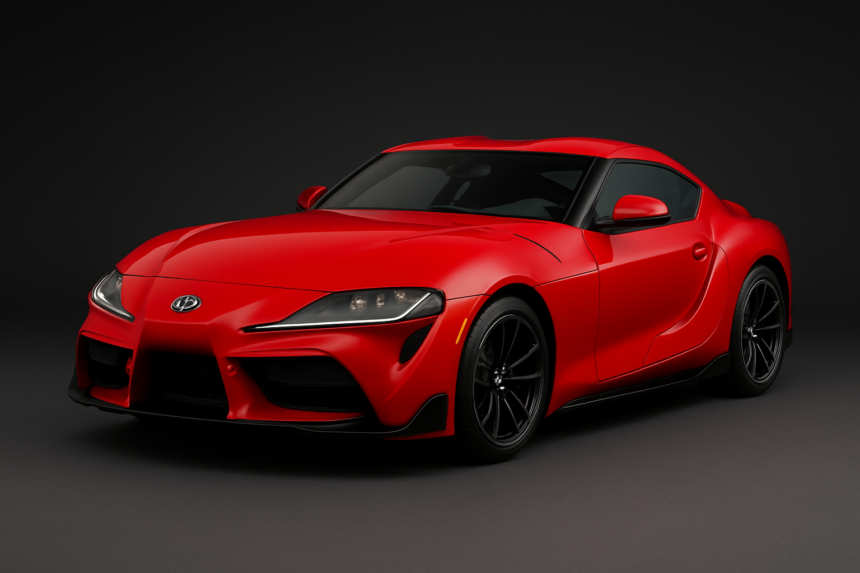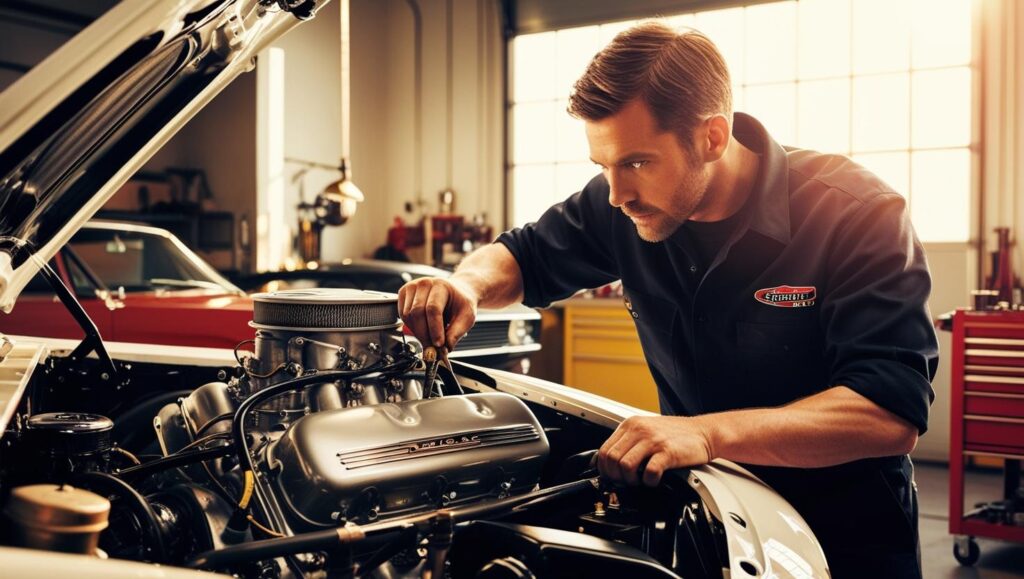Introduction — The Return of a Legend
Few names stir tuner and performance-car fans like “Supra.” The fourth-generation A80 became a cult icon for its bulletproof 2JZ inline-six and limitless tuning headroom. When Toyota Supra revived the badge in 2019 as the A90/A91, expectations were sky-high. This new Supra shares its bones with the BMW Z4 — a collaboration that upset some purists but also delivered a highly competent sports car.
From a mechanic’s perspective, the modern Supra is a different animal from the old 2JZ beast. It’s lighter, more compact, bristling with electronics, and built for precision rather than brute force. Yet it still channels much of the old spirit: a turbocharged inline-six under the hood, rear-wheel drive, and huge tuning potential.

Design & Packaging — Compact and Focused
Exterior: The A90 Supra has a dramatic, almost concept-car silhouette. Long hood, short wheelbase, double-bubble roof and prominent rear haunches give it a hunkered-down, purposeful stance. Aerodynamic elements like the integrated ducktail spoiler and functional air ducts are more than styling tricks.
Interior: Driver-centric and snug. The cockpit wraps around you with supportive seats and a low cowl for visibility. BMW switchgear is everywhere — from the iDrive-based infotainment to the steering wheel buttons — which is good for ergonomics but erodes some of Toyota’s identity. Materials are solid, controls intuitive, but taller drivers may feel cramped.
Practicality: It’s a two-seater coupe with a hatch. The trunk is decently sized for a weekend trip but limited compared to GT cars like the Mustang. Cabin storage is minimal. This is a sports car first, luggage hauler second.
Powertrains — BMW DNA, Toyota Tuning
2.0L Turbo Four (B48):
- Output: About 255 hp and 295 lb-ft.
- Mechanic’s note: This lighter entry model (available in some markets) is quick enough for daily duty and has excellent balance, but lacks the drama and headroom of the six. The BMW B48 is proven but more complex than a simple naturally aspirated engine.
3.0L Turbo Inline-Six (B58):
- Output: 382 hp and 368 lb-ft (U.S. spec) in recent model years.
- Mechanic’s note: This is the heart of the modern Supra. The BMW-sourced B58 is an outstanding engine: smooth, torquey from low rpm, and highly tunable. Toyota calibrates it for sharper throttle response and a more aggressive exhaust than in BMWs. Stock, it’s capable of 0-60 mph in the mid-3s. With bolt-ons and a tune, 450–500 whp is common on stock internals.
Transmission:
- 8-speed ZF automatic: Quick and smooth, with crisp paddle shifts. It’s the same unit used across many high-performance cars and is extremely robust if serviced properly.
- 6-speed manual (2023+): Toyota answered enthusiasts by adding a manual gearbox to the inline-six. It transforms the car’s character for purists, though it’s a touch slower in outright performance.
Mechanic’s view: BMW’s engines bring sophistication but also complexity — direct injection, high-pressure fuel pumps, integrated exhaust manifolds, and sensitive electronics. Maintenance and diagnostics are more involved than the old 2JZ, but reliability so far has been good.
Chassis, Suspension & Steering — Precision Over Prowess
Platform: The Supra rides on BMW’s CLAR architecture with a bespoke suspension tune from Toyota’s Gazoo Racing engineers. Wheelbase is 97 inches — shorter than a 911 or Z4 — which gives it a playful, eager turn-in.
Suspension: Double-joint MacPherson struts up front, multi-link rear, adaptive dampers standard. Out of the box, the Supra is stiff but not punishing. In Sport mode it’s firmly controlled; in Normal it’s livable on real roads.
Steering: Quick ratio, electrically assisted but with decent feedback. Not as talkative as an old hydraulic rack, but better than many modern sports cars.
Brakes: Large Brembo four-piston fronts on the 3.0. Strong, consistent stopping power; good pedal feel. Track use benefits from upgraded pads and fluid.
Mechanic’s note: The chassis is tight and well-engineered. Upgrades like coil-overs, camber plates, and stickier tires can push it into serious track-weapon territory.
On-Road Driving — Modern Supra Personality
- Acceleration: The B58 delivers a fat torque curve from 1,800 rpm up. There’s minimal lag, and the 8-speed snaps off shifts like a dual-clutch. The manual is less clinical but more involving.
- Handling: Short wheelbase plus wide track equals nimble, almost twitchy responses. It rotates eagerly under throttle, with stability control in Sport allowing a playful slip angle before reining you in.
- Ride: Firm but compliant — less harsh than some rivals. Long trips are perfectly doable.
- Sound: Toyota fitted an active exhaust with a deep, aggressive tone. Some artificial enhancement pipes sound into the cabin, but the real turbo six sounds good enough. Aftermarket exhausts wake it up further.
Daily Usability — More Civil Than You’d Think
Despite its focus, the Supra isn’t a punishing commuter. Visibility is decent, the seats are comfortable, climate control and infotainment work well, and the hatchback layout adds practicality missing from most two-seaters. Fuel economy around 30 mpg highway is achievable with gentle driving, though spirited runs drop it fast.
Downsides: cabin noise on rough pavement, limited interior storage, and the fact that it’s still a low sports car — getting in and out requires a bend of the knees.
Reliability & Common Issues
So far, the A90 Supra has proven fairly robust. The B58 engine has a good track record in BMW applications. However:
- High-pressure fuel pump failures have occurred in some BMW B58s; Toyota’s version uses slightly different parts but still worth monitoring.
- Coolant leaks from plastic fittings can appear at high mileage if neglected.
- Electronics/software: occasional infotainment glitches; nothing catastrophic.
- Maintenance costs: Oil and filter changes are straightforward but use quality synthetic oil. Spark plugs and coils are easy; high-pressure systems and turbos are more complex for DIYers than old 2JZ setups.
Mechanic’s tip: follow oil change intervals more aggressively than the factory’s long intervals if you plan to tune or drive hard.
Tuning & Aftermarket — Modern Playground
The new Supra may be BMW-based, but the aftermarket embraced it immediately. ECU tunes, downpipes, intercoolers, and hybrid turbos push the B58 well past 500–600 whp with supporting mods. Suspension kits, aero parts, and brake upgrades are plentiful.
DIY friendliness is mixed: simple bolt-ons are easy, but ECU tuning and deeper mechanical work require familiarity with BMW diagnostics and torque specs. The old 2JZ Supra was Lego-simple; the A90 is a laptop-and-socket-set affair.
Safety & Tech
Standard Toyota Safety Sense includes pre-collision warning, lane departure, and adaptive cruise. Crash structure is solid, and the Supra earned good ratings in global tests. Tech is BMW-based and generally intuitive. No semi-autonomous highway features like Tesla or Mercedes, but that’s fine for a driver-focused coupe.
The Supra vs. the Modern World
Against competitors like the Porsche Cayman, BMW M2, and Nissan Z, the Supra is a bargain. It undercuts Porsche on price, out-handles the Z in stock form, and offers a more refined interior than the Camaro/Mustang crowd. It’s also one of the few modern cars to keep the inline-six/RWD recipe alive.
For enthusiasts who miss the analog feel of the old A80, the A90 is more digital and precise. But in an era of crossovers and EVs, it still represents a genuine, rear-drive sports car experience with real tuning potential.
Who Should Buy One? Who Shouldn’t?
Buy one if:
- You want a modern, rear-drive sports car with a turbo inline-six.
- You appreciate sharp handling and everyday livability.
- You plan to tune and modify but are comfortable with BMW-style complexity.
Don’t buy one if:
- You expect old-school 2JZ simplicity and bulletproofness.
- You need rear seats or a big trunk.
- You want the raw, naturally aspirated sound of the old Supra.
Final Verdict — A Mechanic’s Closing Thoughts
The new Toyota Supra isn’t the 2JZ monster of the ’90s — and that’s okay. It’s a thoroughly modern sports car: fast, agile, reasonably comfortable, and highly tunable. From a mechanic’s stool, it’s more complex to wrench on than the old model but also better engineered out of the box. Bolt-ons and a tune can deliver supercar performance for relatively modest money, while the chassis responds beautifully to suspension tweaks.
If you’re looking for a sports car that bridges heritage and modernity — a turbo inline-six, rear-drive coupe with real character in an era of crossovers and EVs — the Supra deserves a place at the top of your list.


